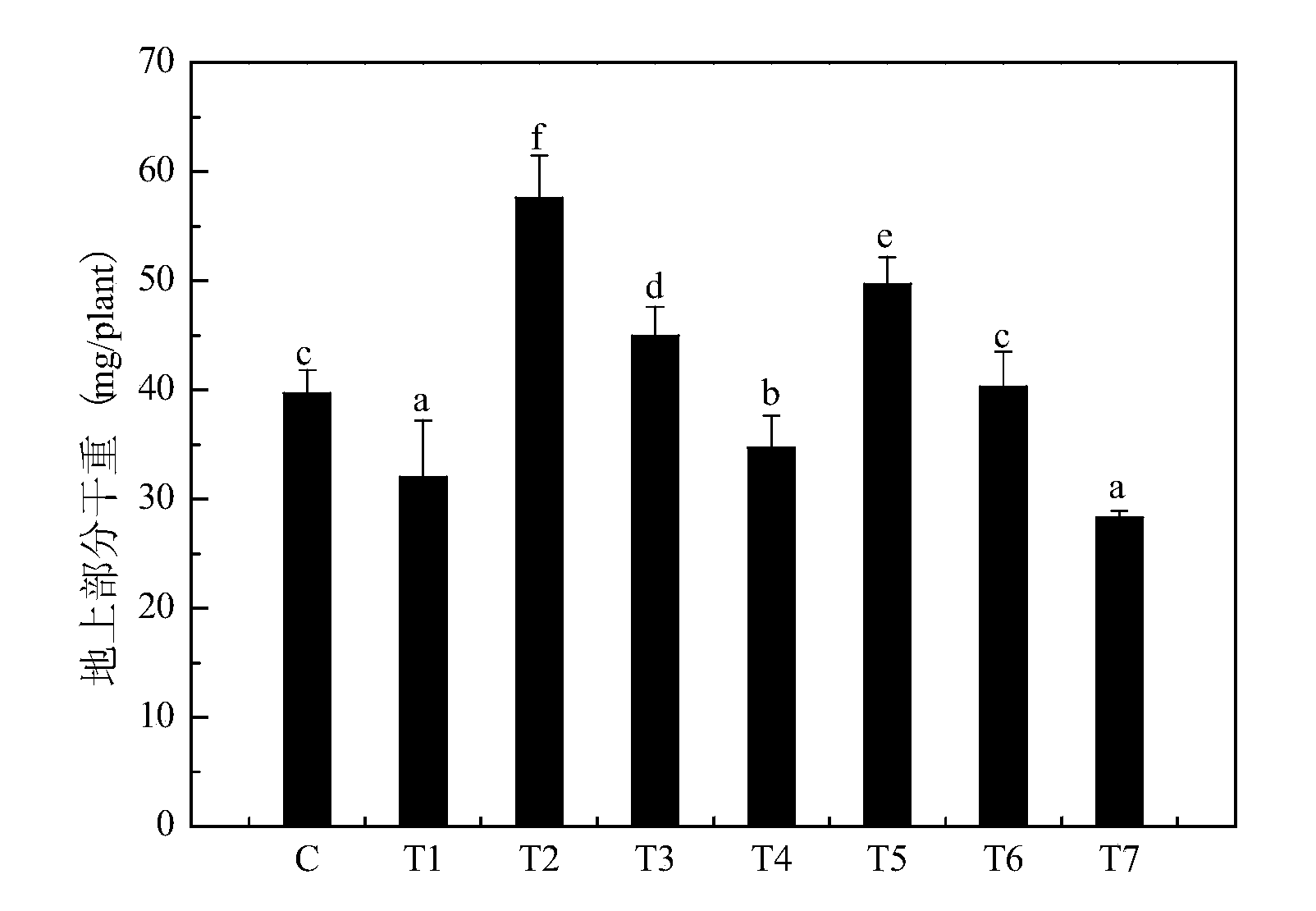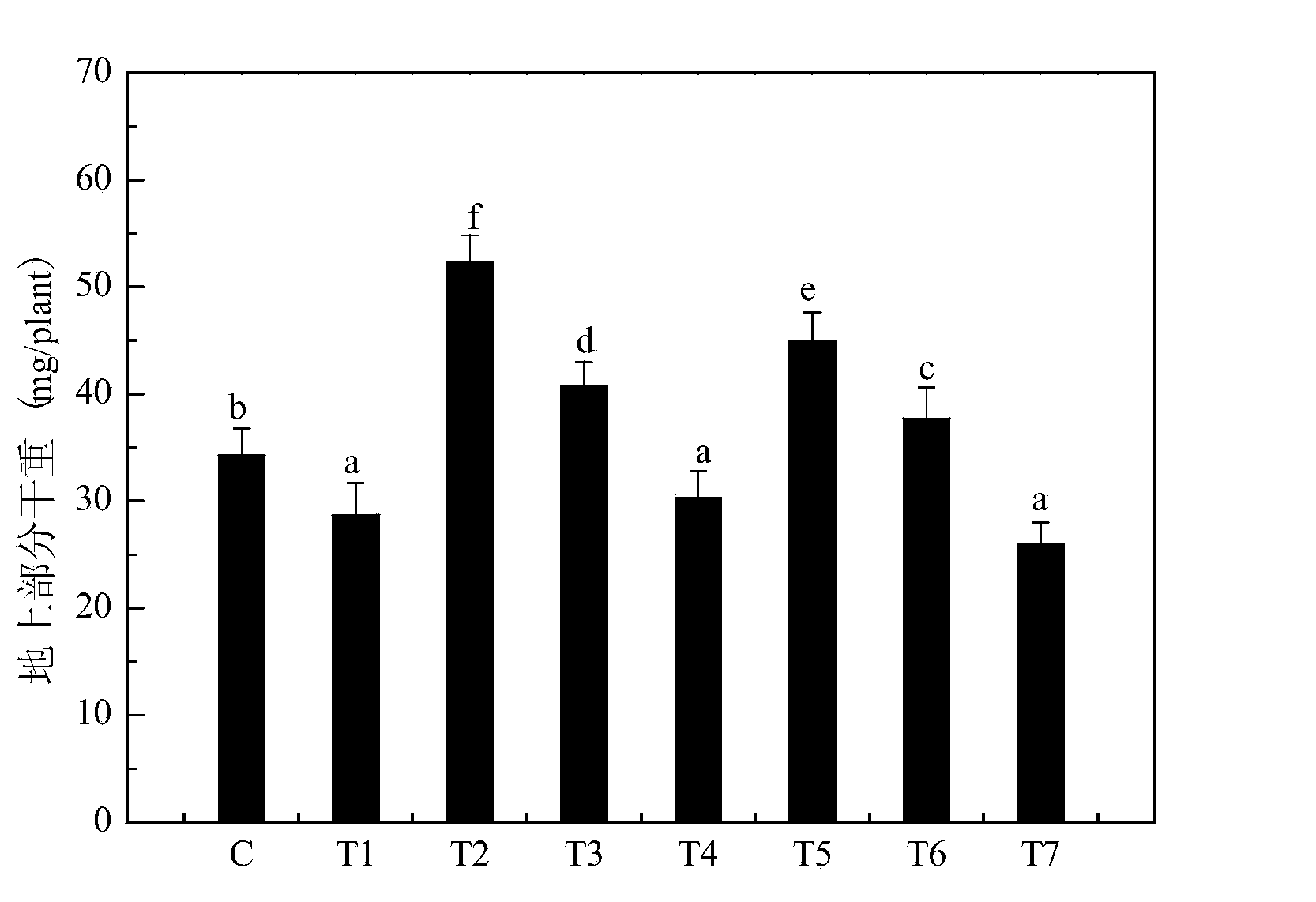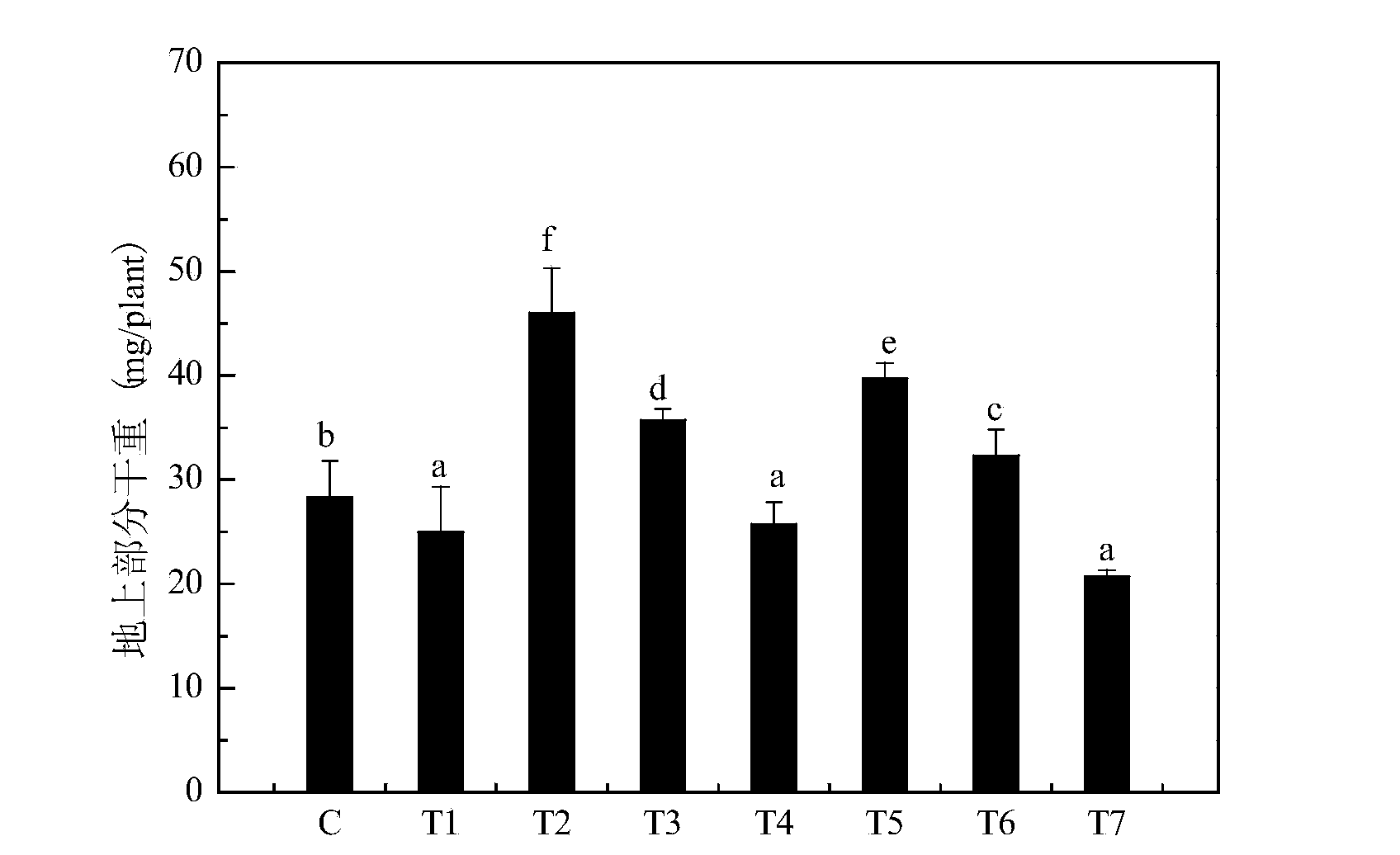Method for strengthening remediation of lead contaminated soil by combining gibberellin and ethylenediamine tetraacetic acid
A technology of ethylenediaminetetraacetic acid and lead-contaminated soil, applied in the direction of restoration of polluted soil, etc., to achieve the effects of promoting plant growth, promoting extraction and enrichment, and increasing biomass
- Summary
- Abstract
- Description
- Claims
- Application Information
AI Technical Summary
Problems solved by technology
Method used
Image
Examples
Embodiment 1
[0017] The experimental site was set in the greenhouse of the School of Environment, Zhejiang Gongshang University. The soil for potting experiments was collected from a farmland in the outskirts of Hangzhou, and the soil type was clay. The lead concentration of the soil used was 250 mg / kg. The study found that compared with one-time addition, the amount of lead in the soil was extracted and transported by plants when adding EDTA in divided doses (document 4: Hadi, F., Bano, A., Fuller, M.P. 2010. The improved phytoextraction of lead(Pb) and the growth of maize(Zea mays L.): the role of plant growth regulators(GA 3 and IAA) and EDTA alone and in combinations[J]. Chemosphere80,457-462.). Moreover, when the EDTA concentration is 2.5mmol / kg, buckwheat and sunflower have the strongest ability to absorb and transport lead, so the EDTA concentration is set at 2.5mmol / kg in this experiment (Reference 5: Chen, Y.H., Li, X.D., et al., 2004. Leaching and uptake of heavy metals by ten ...
Embodiment 2
[0032] The experimental site was set in the greenhouse of the School of Environment, Zhejiang Gongshang University. The soil for potting experiments was collected from a farmland in the outskirts of Hangzhou, and the soil type was clay. The lead concentration of the soil used was 500 mg / kg. Put the test soil into pots after passing through a 5mm sieve, and fill each pot with 18.5cm (diameter)×21cm (height) with 2kg (dry weight) of soil, and put a tray under the pot. Pb(NO 3 ) 2 Add the soil in the form of aqueous solution, and mix well, the measured lead concentration in the soil is 500mg / kg, add water to 75% of the field water capacity, and use it for the test after being stable in the greenhouse for 30 days. A total of 8 experimental groups were set up in the experiment, namely: without adding EDTA and GA 3 (C), add 2.5mmol / kg EDTA (T1), leaf spray 1μM GA 3 (T2), leaves sprayed with 10 μM GA 3 (T3), leaves sprayed with 100 μM GA 3 (T4), 2.5mmol / kg EDTA+ leaf spray 1μM ...
Embodiment 3
[0047] The experimental site was set in the greenhouse of the School of Environment, Zhejiang Gongshang University. The soil for potting experiments was collected from a farmland in the outskirts of Hangzhou, and the soil type was clay. The lead concentration of the soil used was 750 mg / kg. Put the test soil into pots after passing through a 5mm sieve. Each pot is 18.5cm (diameter) × 21cm (height) and filled with 2kg (dry weight) of soil, and a tray is placed under the pot. Pb in the tested soil was expressed as Pb(NO 3 ) 2 Add the soil in the form of an aqueous solution and mix it thoroughly. The measured lead concentration in the soil is 750mg / kg, then add water to 75% of the field water holding capacity, and use it for the test after being stable in the greenhouse for 30 days. A total of 8 experimental groups were set up in the experiment, namely: without adding EDTA and GA 3 (C), add 2.5mmol / kg EDTA (T1), leaf spray 1μM GA 3 (T2), leaves sprayed with 10 μM GA 3 (T3), ...
PUM
 Login to View More
Login to View More Abstract
Description
Claims
Application Information
 Login to View More
Login to View More - R&D
- Intellectual Property
- Life Sciences
- Materials
- Tech Scout
- Unparalleled Data Quality
- Higher Quality Content
- 60% Fewer Hallucinations
Browse by: Latest US Patents, China's latest patents, Technical Efficacy Thesaurus, Application Domain, Technology Topic, Popular Technical Reports.
© 2025 PatSnap. All rights reserved.Legal|Privacy policy|Modern Slavery Act Transparency Statement|Sitemap|About US| Contact US: help@patsnap.com



